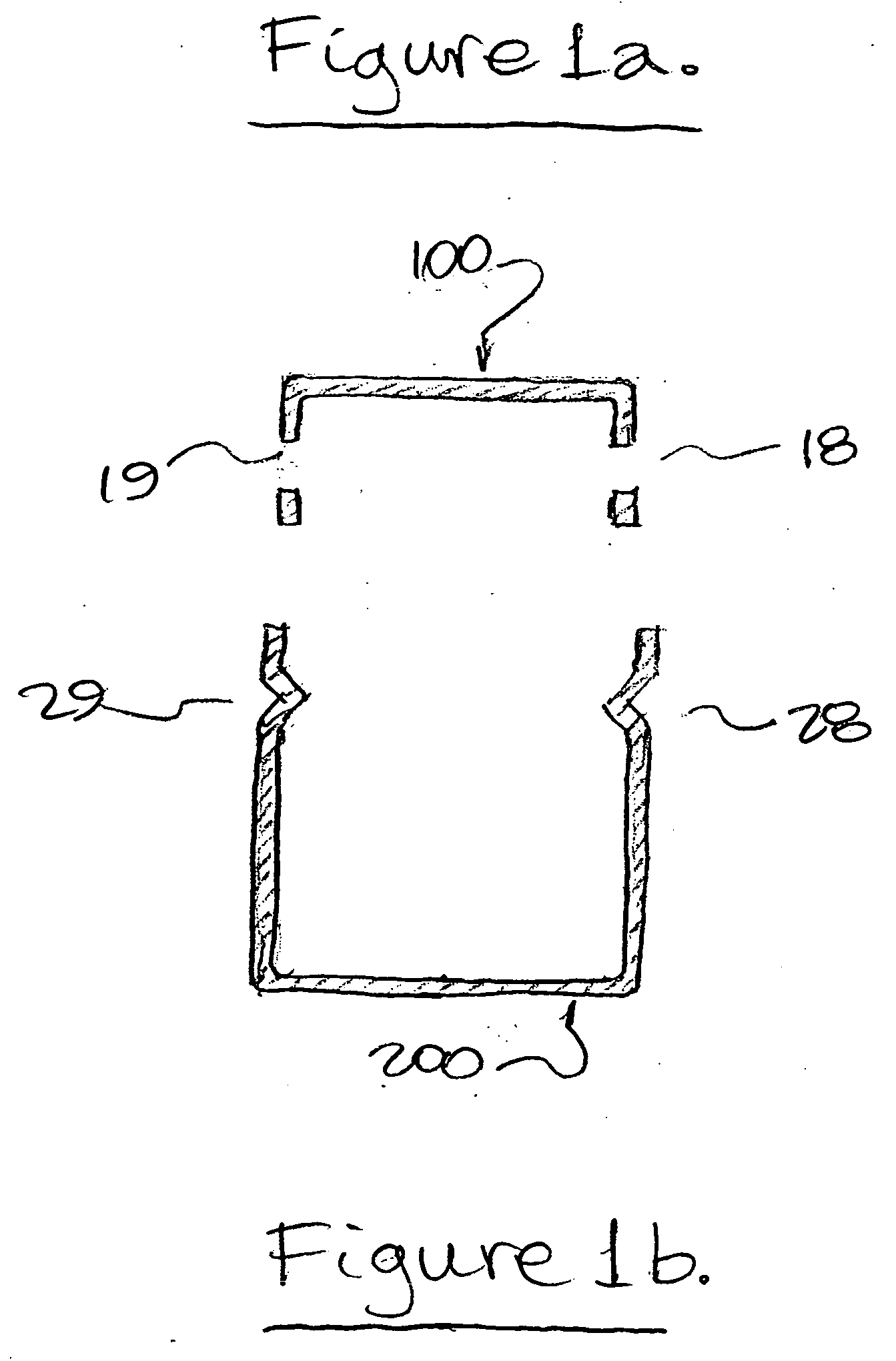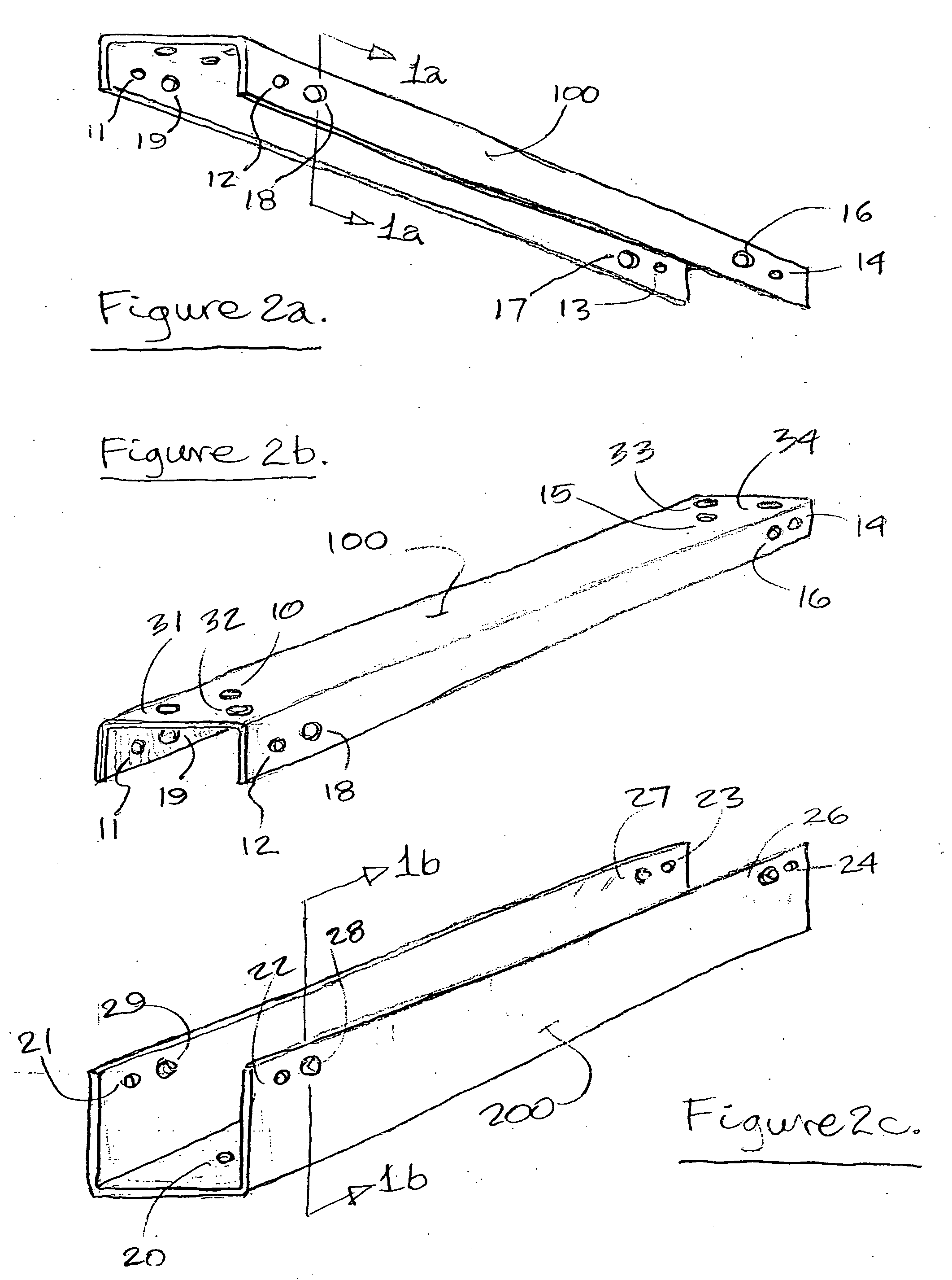Extensible modular luminaire
a modular luminaire and luminaire housing technology, applied in the field of modular luminaires, can solve the problems of difficult mounting or installation, difficult replacement of lamps, and crooked or challenged rows of linear lighting made by assembling individual luminaire housings, and achieve the effects of convenient installation and service, convenient separation, and new ease of installation
- Summary
- Abstract
- Description
- Claims
- Application Information
AI Technical Summary
Benefits of technology
Problems solved by technology
Method used
Image
Examples
Embodiment Construction
[0046] Basic Housing
[0047]FIGS. 1a, 1b, 2a, 2b, and 2c, show two parts that when assembled, comprise a luminaire housing, as shown in FIGS. 3a, 3b, and 4. An inverted-U-shaped basic mounting track (100), for mounting and supporting the assembled luminaire and supporting appendages, is shown in FIGS. 1a, 2a, and 2b. A similarly sized U-shaped basic channel (200), for supporting luminous components, is shown in FIGS. 1b and 2c. The track and channel lengths are much greater than their widths or heights. Both are substantially square-cornered. Both have thin walls made of material that is stiff, but not entirely rigid.
[0048] The track has two sides and a top, and the channel has two sides and a bottom. The track is narrower than the channel, and the channel is taller than the track. The inside distance between the lower edges of the sides of the channel is the same as the outside distance between the track's sides. The channels corners are formed to slightly less than ninety degree i...
PUM
 Login to View More
Login to View More Abstract
Description
Claims
Application Information
 Login to View More
Login to View More - R&D
- Intellectual Property
- Life Sciences
- Materials
- Tech Scout
- Unparalleled Data Quality
- Higher Quality Content
- 60% Fewer Hallucinations
Browse by: Latest US Patents, China's latest patents, Technical Efficacy Thesaurus, Application Domain, Technology Topic, Popular Technical Reports.
© 2025 PatSnap. All rights reserved.Legal|Privacy policy|Modern Slavery Act Transparency Statement|Sitemap|About US| Contact US: help@patsnap.com



